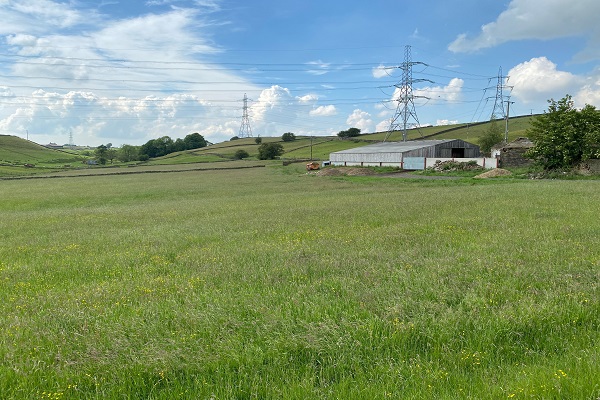In the know: 10 ways to improve your financial resilience
Financial resilience is at the heart of the long-term success of all businesses.
Yet data from the Farm Business Survey (FBS) for the 2022/23 year shows that less than a third of farmers regularly produce the sort of financial information that would enable them to improve their decision making about the future. Meanwhile, only one in five has a formal business plan in place.
With the impact of the wet weather, market volatility and the phasing out of support payments set to put a further financial squeeze on the farming sector, we offer 10 actionable insights on how farms and estates businesses can improve their financial management.
1. Understand your accounts
For too many farming businesses, the production of accounts is seen as a necessary evil rather than a useful management tool. A set of accounts will highlight three key areas at a quick glance: profitability, cash generation, and capital growth (or the opposite).
It is important to know the difference between these three key pieces of information and to understand what they represent for your business. Too often, businesses can appear to make a strong profit but have a negative cash position, or estates have historic balance sheets that do not show the true level of capital growth. Once this key information is understood and the ‘macro’ picture is clear, it becomes possible to delve into the details.
If these numbers are not known, it is advisable to ask your accountant, agent or bank manager to explain them and teach you what to look for. Alternatively, short courses on how to interpret accounts are available online or through local colleges. No one wants to be a busy fool, so understanding the current position is key.
2. Produce a budget and a business plan
Once the accounts are understood, it becomes straightforward to produce a simple budget for the next year or so to see the likely outlook. In the crudest sense, one needs to go through each number on the accounts and decide whether it will be higher or lower than last year for the forthcoming year, and by how much, then recalculate to look at the outcome.
A budget, of course, can be much more complex and broken down into a monthly projected cash flow to allow for proper cash management within the business and to make decisions based on cash flow. For example, should the wheat be sold in September, or can the business afford to hold off until February?
A business plan is a form of words that describes what actions will be taken to achieve the projected numbers. This is a simple record that can be used as a road map to ensure adherence to the plan and to prevent distraction or forgetting to take previously considered actions.
Once the budget and business plan are produced, it becomes possible to use two critical words: ‘what if’. For example, what if another 50 acres were taken on? What if oilseed rape was dropped in favour of beans as a break crop? What if milking was reduced from three times a day to twice a day? It provides a template from which to work, allowing for an easy assessment of the likely final outcomes of making these changes. Without a budget and business plan, the business is flying blind.
3. Monitor the business plan and the budget
Once a business plan and a budget with a monthly cash flow have been produced, they should be monitored regularly. This practice allows for questions around why the fertiliser cost was higher than expected. Was more used? Was the cost per bag higher? Or was there an error in the numbers?
Monitoring enables you to identify when things are going well or not so well. Particularly with a dairy, poultry, or pig enterprises – where inputs are being bought and produce sold on an almost continuous basis – this is vital as quick information allows for timely changes to accelerate positive outcomes or fix negative ones.
Understanding why something went well, or not, is important to prevent recurring problems. For example, extended void periods on let properties can be costly, with bills needing to be covered and with no rent coming in. Taking steps to ensure the property is redecorated more quickly and let more swiftly will address this risk.
4. Benchmark and act on areas of weakness
The agricultural sector is fortunate to have amazing access to benchmark data and many farmers take advantage of this already. Benchmarking allows comparisons with a sample of other similar businesses’ costs and expenses at a granular level and, importantly, provides the opportunity to act on the results.
Farms that benchmark tend to improve quickly by identifying areas where action can be taken. However, even those farmers who are happy to use benchmarking at a gross margin level may not have considered doing it on a whole accounts basis.
Our advice is to be brave and examine all income and costs. What is the average rural let property rent per month on farms similar to yours? If you don’t know, how can rents be increased? Are you paying more per acre for fuel or insurance? If so, what can be done about it? Does the business have the right tractors pulling the right implements, or is there a favorite gas-guzzling tractor used for everything?
It can be appropriate to have higher costs in certain areas; for instance, pedigree herds often have higher vet and med costs per head because they aim to sell breeding progeny with a health status to achieve higher sale prices. Knowing why the costs are high and having it in the ‘plan’ for them to be so is a choice. The error is having high costs without knowing why.
5. Group buying inputs
Many farmers who benchmark choose to group buy. This can provide the advantage of larger volumes, resulting in better buying power, and also reduce the administrative burden of shopping around, with someone else handling that for the whole group.
Farmers should not be deterred by the fact that they once bought spray cheaper than the group, assuming the group must be bad at buying. In all likelihood, there would have been an end-of-season adjustment for anomalies like this, and it is important to look at the aggregate basket of inputs purchased. If the basket is less expensive and there is reduced hassle and administrative work, what is not to like?
6. Challenge the renewal quote
How often does a note arrive from a supplier stating, ‘due to current economic situations the cost will be rising from next week by 10%’? Often, these cost increases can be justified. However, if prices are being raised, this is an opportunity to check that the business is:
a) getting good value
b) receiving great service
c) paying only for what is wanted or needed
d) maintaining the right level of relationship with the supplier
e) reviewing other offers to see if any improvements can be made on the above points.
No supplier should have any issue with being asked those questions or reviewing the service levels. Suppliers are typically willing to vary their offerings to make them more bespoke for an important customer or client.
7. Borrowing is not a bad thing
Many discussions take place around kitchen tables about ideas to grow a business, improve profitability, or even completely restructure how a business operates. However, often the ideas get dismissed because of the belief that ‘we don’t borrow money and can’t afford to implement that plan’.
Borrowing money to cover for a lack of profit or cash generation is not sustainable and should generally be avoided if possible. However, borrowing for the right reasons allows businesses to quickly adapt to changing situations and take advantage of new opportunities when they arise.
For example, the planning process is currently more supportive than it has been in many years for converting farm buildings into residential property. Spending £300,000 on a conversion that may generate £30,000 per year, add value to the capital base and spread risk within the business seems like a good idea. Most people do not have that sort of cash readily available, but borrowing for this type of opportunity is often cost-effective and generates cash for the bottom line.
8. Structure debt correctly
When a business has debt, that debt comes at a not insignificant cost, so structuring it correctly is vital to ensure the best value. There are some key areas to consider. If there is an overdraft, is it at a sensible level to cover just the working capital requirements of the business? An overdraft account should come back into credit within each year and not sit at its limits, or it becomes very expensive. If the debt is on a repayment basis, is it being repaid in line with the income and lifespan of the project it financed? If not, a review is necessary. Is the debt affordable? If it isn’t, the business will have to pay for more debt more often, which is expensive and time-consuming.
Is the business with the right lender? It is important to have a good relationship with the lender, ensuring they act quickly to requests and really understand the business. If they don’t, it is advisable to move to a different lender. The price of debt is a key driver, and structuring it properly is crucial. However, having a bank that is liked and that likes the business is worth a lot, and doesn’t necessarily need to cost any more. Finding the right lender is essential, and a finance broker can provide valuable guidance and support in structuring deals and finding the right fit.
9. When diversifying, don’t forget to focus on the core business
The answer for many farm businesses to the question ‘how can we make more money?’ is to diversify. Consultants enjoy working with clients on diversification plans and bringing new enterprises onto the farm or estate. However, they will challenge everyone who diversifies to ensure that the core farming enterprises remain profitable.
It is observed far too often that people take their eye off the farming and focus on a diversification, resulting in the core business suffering. It may be necessary to introduce new people or new skills to the business to either backfill roles on the farm or to drive forward a diversification at pace. Budgeting for diversifications separately and truly understanding what they are adding and, importantly, what they are taking away, is essential.
10. Ask for help – critical challenge is vital
Many people are able and willing to assist with all of the above. A strategic review is a great place to start, where a suitably qualified person works with the business owner to analyse how it operates, how it compares to others, and lays out the strengths, weaknesses, opportunities, and threats.
This person might be a Strutt & Parker advisor, but could also be the accountant, lawyer or banker. Alternatively, someone who is part of the local discussion group or a local farmer friend you admire or trust could provide valuable insight. When someone is involved in the ‘weeds’ of a business, it can be difficult to spot glaringly obvious issues that an impartial outsider can see.
Where someone is charging for this advice, they should be challenged to account for their value, both before they start and when the project is complete. Value for money is important but making the right (often tough) business decisions is vital for the success of a business going forward.
Strutt & Parker’s team of Rural advisors can assist with all aspects of improving financial resilience. Our services include carrying out strategic reviews to give you an objective appraisal of your current position, as well as identifying future opportunities and threats. We can act as an independent sounding board for new business ideas and will draw together the necessary budgets, business plans and benchmarking data to support better decision making and financial planning.
Within our Farming and Land Management teams we also have advisors who can assist clients who want to borrow money or restructure existing debt. As part of our Financial Brokerage group, they have relationships with every major lender in the rural and agricultural sector and can secure farms and other rural businesses competitive funding quickly and effectively.
This article forms part of our ‘In the Know’ series which sees Strutt & Parker experts share insight and advice to enable farms and estates to improve their business resilience, both from an economic and environmental perspective






